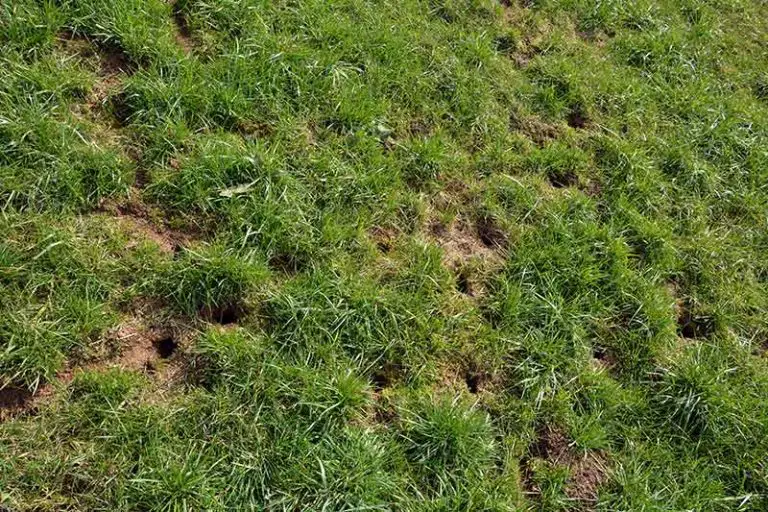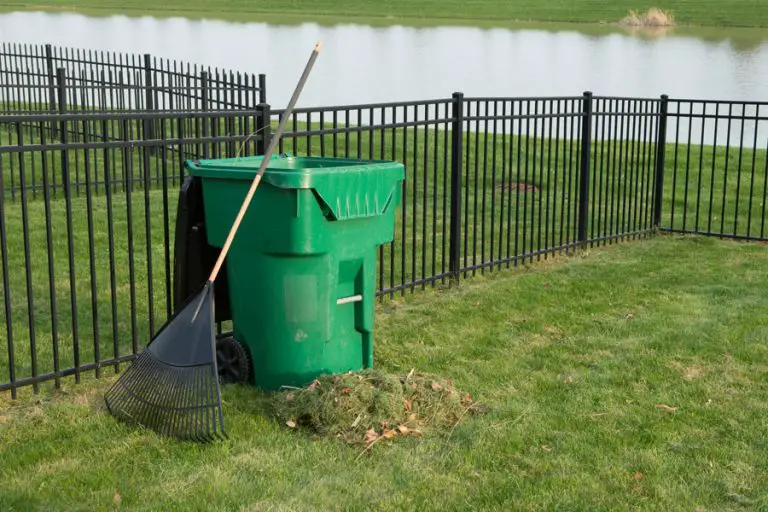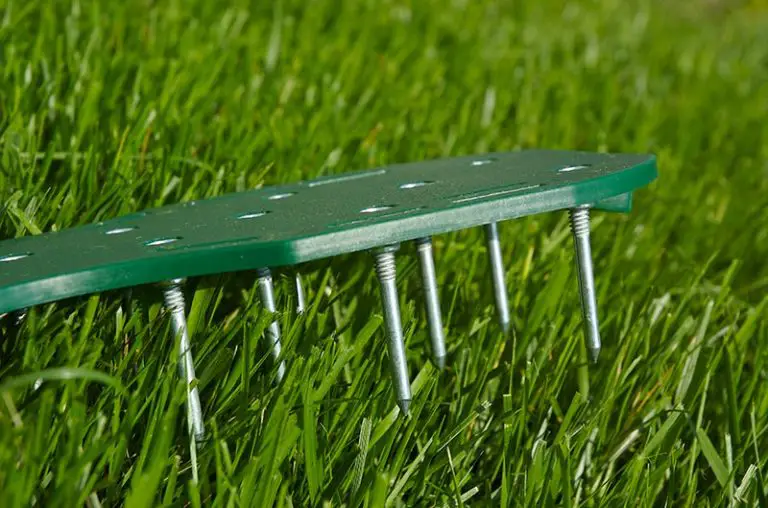Does Lawn Lime Hurt Pets?
Who doesn’t love a beautiful green and lush lawn? I know I do, so when I noticed my grass looking a bit sorry for itself, I decided to give it a treatment with some lawn lime. As a pet owner, I first took a look at whether or not lawn lime could hurt my pets. After doing some research, I felt comfortable answering the question, does lawn lime hurt pets?
In general, lawn lime is non-toxic to animals, but if your pet comes into direct contact with lawn lime, it can be harmful to them. From minor chemical burns on paw pads, skin rashes to hypercalcemia, the risks are dependent on the type of lime and extent of contact your pet has had with it.
Now that we know that lawn lime can be harmful to your pets, it’s a good idea to look at the different kinds of lime out there and which would be best to use if you are a pet owner. Another aspect to look at would be the kinds of reactions you might expect your pets to have if they have come into direct contact with lime.
The Health Risks Involved for Your Pets When Using Lawn Lime
The Dangers of Lawn Lime for Pets Paw Pads and Softer Skin
Suppose lime comes into direct contact with your pets’ skin, especially the moist areas between the pads; it can cause irritation and even a rash; even the tougher skin of the paw pads is at risk. Hydrated lime is the most dangerous if it comes into contact with the skin causing mild to bad chemical burns and even dermatitis.
If your pet does come into direct contact with any form of lime, it is best to take them to the vet for a checkup and find out the best way to care for any resulting issues.

What Could Happen to Your Pet if They Ingested Lawn Lime
Pellet form is the easiest way for your pet to ingest lime; picking up a few pellets to have a taste is not something I would put past my dog, who often tries to eat random things lying around in my garden. If ingested, lime can cause severe problems, and it’s best to take them to the vet quickly if you think they might have eaten some.
Eating lime can cause mild digestive issues such as an upset stomach or constipation, but it could also result in a condition called hypercalcemia. Hypercalcemia is a condition whereby there is excess calcium in the blood. Symptoms include vomiting, nausea, constipation, and the gastrointestinal tract having decreased functionality. It can get bad enough to make your pet have seizures, spasms, general weakness, internal bleeding, haemorrhaging, and loss of appetite.
Treatment for these symptoms usually involves fluid therapy, glucocorticoids, and diuretics.
Lawn lime isn’t the only risk to dogs that can be found in the lawn. In addition to this, inorganic fertilizers can cause harm to your dog, especially if ingested. Using pet-safe fertilizer or following the instructions closely on inorganic fertilizer can reduce this risk.
What Risks Are There if Lawn Lime Gets Into Your Pets Eyes
If your pet happens to get some of the lime into their eyes, it could cause irritation. Best practice would include not allowing your pet near you while opening lime bags and keeping them inside if you apply non-caustic lime. If your pet does get some lime in their eye, get them to a vet so that it can be removed or treated correctly.
Dangers of Lawn Lime in Your Pets Nose, Lungs, and Throat
It is dangerous for any pet to be exposed to lime dust. Exposure can cause burning in the throat, nose and mild to severe damage to the esophagus and lungs. If contact has been made between your pet and lime dust, the best thing to do is get them into an area of fresh air.
Keep an eye on them, and if they start to show any symptoms, such as lethargy, drooling, diarrhea, vomiting, or labored breathing, take them to see a vet.
The Best Way to Get Lawn Lime off Your Pet
If your pet has managed to come into contact with some lawn lime, try to remember never to wash it off! Water can cause a chemical reaction with the lime, which could worsen the situation, especially if you are dealing with caustic lime!
The best way to clean lime off a pet is to take a dry cloth and wipe as much of the lime off your pet’s fur or skin as possible. Check between each pad to make sure you get it all.
Lawn Lime: Which Type is the Best Fit for Your Pets Safety
Most lawns grow at their optimum capacity in a pH ranging from 5.0 to 6.5. Suppose you find that your soil has a more acidic pH, you might want to treat it with some lime. Lime comes from ground limestone and is a calcium-rich substance used to help raise the pH of your soil.
Lime is alkaline, which is why you can use it to raise soil pH if it gets too acidic. Due to this alkalinity, if it comes into contact with your skin or the skin of your pet, it can cause irritation.
There are three types of lawn lime that you can use to increase the pH of the soil under your lawn; lets’ take a closer look at each of these types.
Lime Pellets and Your Pets
Lime pellets are made from pelletizing powdered lime. This form of lime is the safest to use if you have pets or small children. It works well for homeowners who don’t have to worry about applying lime to large spaces.
Non-Caustic Lime and Your Pets
Non-caustic lime comes in powdered form and is best used in a more commercial setting or larger area. As this lime comes in a powdered form, it is less safe to use around your pets as it is harder to control where it goes. It is also much harder to prevent dust residue from hiding in places that your pet might like to visit.
Caustic Lime and Your Pets
Caustic lime is made by heating limestone; this type of lime should not be used in a home setting. Skin irritation can occur if you come into direct contact with it. Another form of this lime is hydrated lime, made from adding water to the caustic lime. This form carries a higher risk of causing chemical burns to both yourself and your pets.
Protect Your Pets: Some Safety Measures for Using Lawn Lime
- Make sure to use the correct type of lawn lime.
- Pellet lime is best for home lawns, especially if pets or small children live in the home.
- When using pellet lime, make use of a spreader to prevent clumping:
- Rotary spreaders – throw pellets into a broad pattern.
- Drop spreaders – disperses your pellets in a line while you push it.
- Throw away all packaging once the lime application is complete
- Make sure there is no excess lime lying around after application – refer to our guide Can You Put Too Much Lime on Your Lawn where we have provided some guidance on what to do in this situation.
- Apply the lime before a significant rainfall is forecasted
- If no rain is predicted for the foreseeable future, give your garden a good watering for a few consecutive days before letting your pet out.
Conclusion
When it comes to lawn lime, you can rest assured that it is non-toxic, meaning it won’t cause any terminal damage to your pet, but it can still cause them harm. There are varying degrees to the type of harm that lime can cause to your pets, and this is directly linked to the kind of lime you use.
As a pet owner, the best type of lime to use would be the pelleted lime. Remember to clear away any lime bags or residue once you are finished and if there isn’t rain forecasted, give your garden a good watering before you let your pets outside.
For more advice on how to grow healthy green grass as a dog owner, see our article How to Grow Grass With Dogs.







